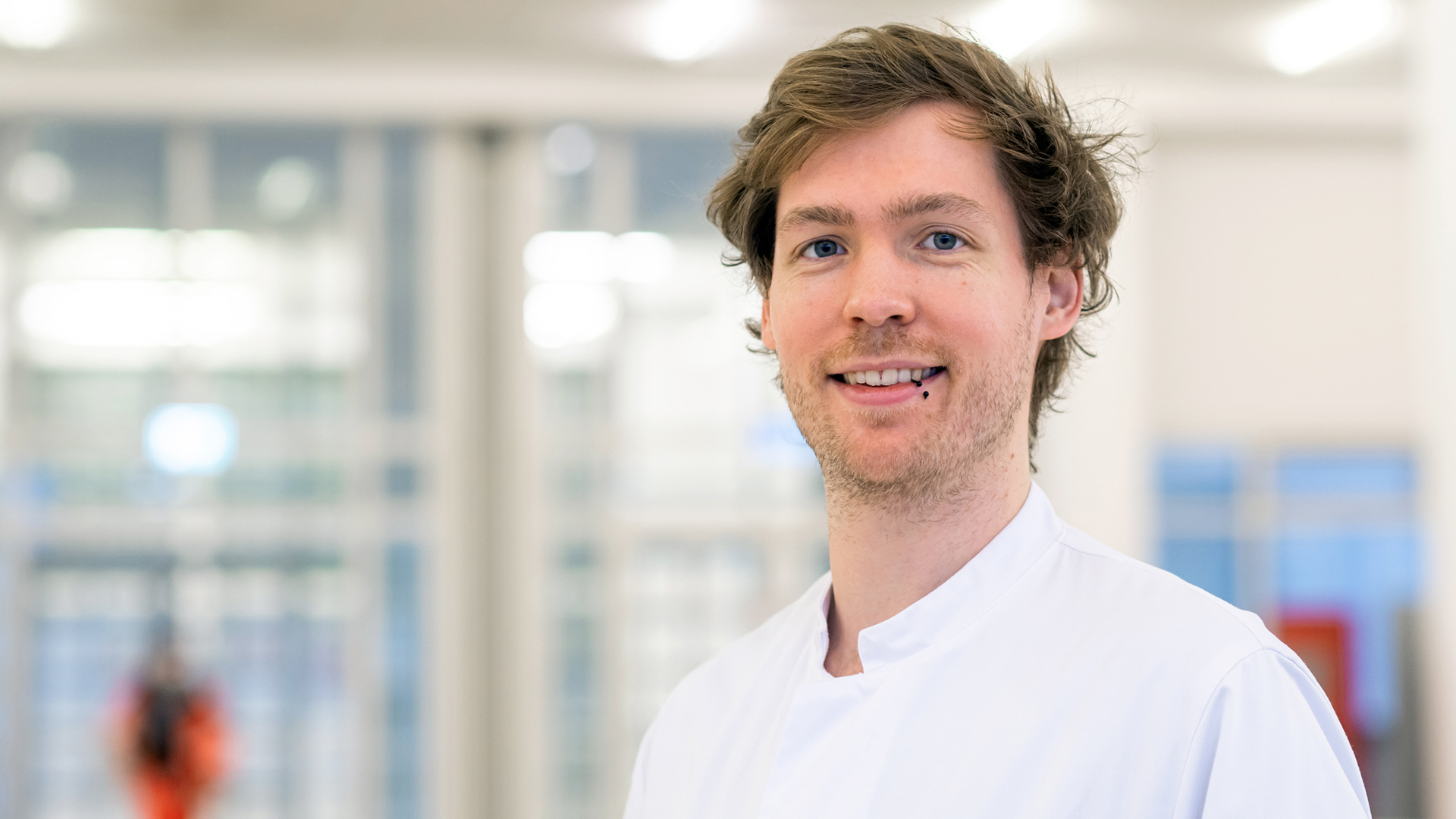
Why I do research: Nils Leimkühler
When the bone marrow scars
- von Ulrike Bohnsack
- 02.11.2023
The bone marrow is the most important blood-forming organ in humans. It is like a factory: its stem cells provide a lifetime of replenishment for the various cells of the blood. Dr. Nils Leimkühler is working on a rare disease of our bone marrow. The 35-year-old is a researcher and assistant physician at the Clinic for Hematology and Stem Cell Transplantation, University Hospital Essen.
Mr. Leimküher, what is myelofibrosis?
This is a rare form of blood cancer in which scar tissue replaces the bone marrow. As a result, the normal function of the bone marrow, i.e. to produce blood, is increasingly impaired. The patients need many transfusions. Unfortunately, most die quickly or develop an acute form of leukemia. Myelofibrosis can only be cured by stem cell transplantation. However, most patients are too sick for this.
What are you researching?
We want to understand how myelofibrosis occurs and how it can be prevented or treated. In particular, we are researching which cells cause this scarring in the bone marrow and how we can target these cells. We are also looking at what lessons can be learned from stem cell transplantation. One goal is to find a new therapy with the same positive effects, but without the risks for the patients that such a stem cell transplant entails.
What motivates you in your work?
I am particularly interested in combining basic research – a large part of which is molecular genetics and cellular biology – with the translational aspect, i.e. with the application of the results in everyday clinical practice. I know the patients whose cells I work with here in the lab. I treat and transplant them. This personal relationship makes research special.
Another point is my great curiosity: We are deciphering more and more the development and course of myelofibrosis. But there are still so many unanswered questions that trigger me every day.
You did postdoctoral research in Rotterdam. Why there?
I had my eye on the U.S. and the U.K., but thematically, the University Hospital of Rotterdam was a great fit, and I'm really grateful to have been at this research center.
Doing clinical and scientific work in parallel works a bit better there than in Germany. Unfortunately, my feeling is that little has changed here with us in recent years. My work demands dedication and a great commitment of time every day. Even though I enjoy doing it, it is often challenging – also for my private life. I would like to see different structures.
Following Dr. Nils Leimkühler: https://twitter.com/LabLeimkuehler
More about the series Why I Do Research: https://www.uni-due.de/why-i-do-research/
